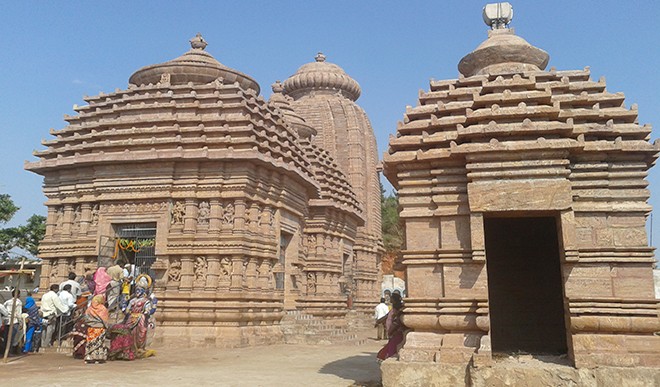The land of India has practised goddess worship since the Vedic era. Everything, according to the sculptures, comes from her. She is where Shakti comes from. She is the creation and the destruction. She embodies the entirety of creation. Hinduism frequently refers to Shakti as “the Great Divine Mother” because it is a notion or embodiment of the divine feminine creative power.
According to legend, this Goddess Shakti, also known as the Goddess of Power, is the complete manifestation of the Adi Shakti. One of the three schools of Hinduism, the Shaktas, have Shakti as their ruling deity.
Both Bimala (Paada Khanda or feet) within the Jagannath Temple in Puri and Tara Tarini (Stana Khanda or breasts) at Purnagiri near Berhampur in Odisha are mentioned in some of the greatest holy books, including the Shiva Purana, the Devi Bhagavata, the Kalika Purana, and the Astashakti.
Another Shakti Peetha in Odisha is said to be the Biraja Temple, also known as Girija Kshetra or the Oddiyana Peetha. Women wear an adornment called an Oddiyana around their navels. Tantra Chudamani claims that Sati’s navel, which is known as Biraja Kshetra, fell in Utkala (Odisha’s former name). In his Astadasha Shakti Peetha stuti, Sri Adi Shankara refers to the Goddess as Girija.
There are 12 Shakti Peethas in popular Odia culture. They are
- Bhagabati in Banapur
- Charchika in Banki
- Katakachandi in Cuttack
- Ramachandi in Konark
- Mangala in Kakatpur
- Hingula in Talcher
- Samaleshwari in Sambalpur
- Vimala in Puri
- Gauri in Bhubaneswar
- Biraja in Jajpur
- Sarala in Jhankata
- Bhattarika in Sasanga
There are 51 Shakti Peethas spread over the subcontinent, where the Goddess is revered as different representations of Dakshayani-Sati, who became Parvati or Durga in later years. The origins of the Shakti Peethas are described in a number of stories.
The most well-liked version is based on Goddess Sati’s self destruction during her father Daksha’s Yagna, which is self-emulating. Shiva carried Sati’s body while grieving and thinking back on their romantic moments together as he travelled the universe. Vishnu uses his Sudarshan Chakra to break her body into 52 pieces after seeing that Shiva’s current state cannot last for much longer. The body parts fell to Earth and were transformed into holy places where all people may pay respect to the Goddess.
According to various sources, there are 51 or 108 Shakti Peethas, between 4 and 18 of which are referred to as Maha (major) in ancient Hindu writings. The majority of these revered Goddess shrines in history are in India, but there are also seven in Bangladesh, three in Pakistan, two in Nepal, one each in Tibet and Sri Lanka, and three in Pakistan.

